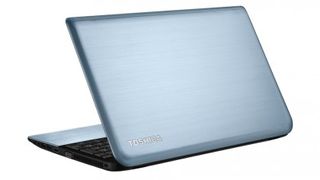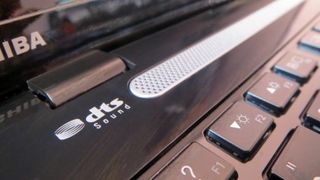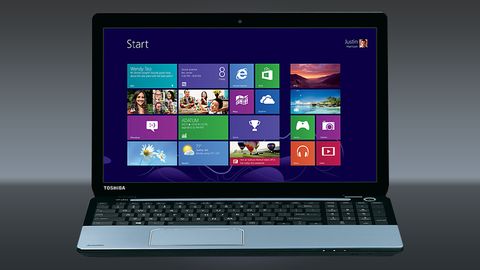Why you can trust TechRadar
The AMD APU wasn't troubled by our PC Mark 8 benchmarks – as its benchmark score of 2,611 demonstrates. That result is better than the Lenovo's Pentium chip, and it's also quicker than the modest AMD hardware inside the HP Pavilion and the Toshiba Satellite C50. Only the Toshiba Satellite M50, with its Intel Core i5 silicon, was faster.
- PCMark 8 Home: 2,611
- PCMark 8 Home battery: 3 hours and 52 mins
- 3DMark: Ice Storm: 44,210; Cloud Gate: 4,616; Fire Strike: 1,102
- DiRT 3: 37fps (1,366 x 768, High)
- BioShock Infinite: 32 fps (1,366 x 768, Low)
- Cinebench: Graphics: 17.38 fps; CPU: 118cb
That impressive processing result was backed up in Cinebench. This machine was easily quicker than the HP Pavilion, Toshiba Satellite and Lenovo IdeaPad, although it still fell behind the Intel-powered Toshiba.
The Radeon HD 8610G graphics core inside the A10-5745M proved its worth in benchmarks, too. Its 3D Mark Ice Storm result over 44,210 is better than three of its rivals – again, only the Toshiba Satellite M50 was quicker because of its discrete Nvidia GeForce GT 740M graphics card.

That reasonable theoretical result means that it's possible to play top games – as long as you're prepared to drop down to lower quality levels. We ran older racing title DiRT 3 at High settings and 1,366 x 768, and the game scored a smooth 37fps, and at Bioshock Infinite's Low quality level and the same resolution this more modern game ran at 32fps.
Toshiba hasn't installed a particularly big battery in this machine, so it's no surprise that its longevity didn't impress. In Balanced mode with the screen at 50% brightness the Toshiba lasted for just shy of four hours, with this figure extending to 4hrs 17mins with Power Saver mode enabled and the screen's brightness turned to 25%. That's shorter than every other laptop we've mentioned here, albeit not by much.
We turned the screen to full brightness and activated High Performance mode, and the Toshiba lasted for 3hrs 7mins – another mediocre result. However you cut it, this machine just won't last a full day away from the mains.

Screen issues
The screen's 1,366 x 768 resolution is what we expect on affordable consumer machines, and the glossy panel isn't a touchscreen. That low resolution is about par for the course on consumer systems, and it's not exactly generous – it makes it difficult to work with two windows open side-by-side, for instance.
Quality isn't high, either. The brightness level of 230:1cd/m2 is reasonable, but the black level of 1.02cd/m2 is dreadful – and it means the contrast of 225:1 is just as bad. That means the Toshiba's screen delivers a narrow range of colours, with a lack of punch at the top-end and black tones that look more like insipid greys.
The colours that are displayed aren't accurate, either. The colour temperature of 6,947K is on the cold side of the 6,500K ideal level, and the average Delta E of 11.31 is one of the worst we've seen. The final nail in this coffin is the sRGB gamut coverage: the Toshiba's screen could only display 59.2% of this undemanding range.

The screen is only capable of handling basic tasks, light work and low-end games, and it's paired with mediocre speakers. Volume is reasonable, and the mid-range is suitably crunchy, but the high-end is dominated by tinny sounds, and there's not nearly enough bass.
As with most other machines at this price, the Toshiba has a 1TB hard disk rather than a pricier, smaller SSD. The 2.5-inch mobile hardware inside this machine ran through our sequential read and write tests at 106MB/s and 100MB/s – entirely average results. The lack of solid-state pace means that application and OS loading times are slow, and the 24s boot time is poor too – around half the speed of the best SSD-powered devices.
Mike has worked as a technology journalist for more than a decade and has written for most of the UK’s big technology titles alongside numerous global outlets. He loves PCs, laptops and any new hardware, and covers everything from the latest business trends to high-end gaming gear.

